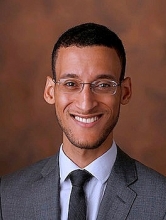There is continued concern over the inequitable distribution of highly experienced and effective teachers among historically marginalized student populations. In their paper Revisiting Teaching Quality Gaps: Urbanicity and Disparities in Access to High-Quality Teachers Across Tennessee, Drs. Luis A. Rodriguez, Tuan D. Nguyen, and Matthew G. Springer use longitudinal data from Tennessee to assess whether students of racially/ethnically minoritized and economically disadvantaged backgrounds have unequal exposure to teachers based on alternate definitions of teaching quality. They consider whether racial/ethnic and socioeconomic teacher quality gaps vary by a school’s local geographical area and level of urbanicity and the extent to which gaps exist across and within schools.
They find minoritized and economically disadvantaged students are 5 to 15 percentage points less likely to be exposed to high-quality teachers. These teacher quality gaps tend to be the largest in urban school contexts. Moreover, school-level exposure gaps tend to be associated with several school, district, and neighborhood factors. Schools with larger shares of free or reduced-price lunch (FRPL) eligible students, schools with Black students, and schools in more segregated districts have inequitable exposure to both highly experienced teachers and high value-added teachers occurring within schools. Schools located in less resourced districts tend to have lower rates of exposure to high-quality teaching specifically among Black, Latinx, and Indigenous students.
Their study highlights how the teacher labor market does not reflect equitable access to effective teachers across all students. The current evidence suggests education policy makers and administrators should continue to enact efforts to enhance the teacher pipeline and attract skilled teaching candidates by increasing opportunities for pre-service student teaching, reducing bureaucratic barriers in teacher hiring, and by developing pathways from graduate residency programs to full-time teaching roles. These strategies could improve the supply of well-trained novice teachers, specifically in hard-to-staff schools.
The article can be cited as follows:
Rodriguez, L. A., Nguyen, T. D., & Springer, M. G. (2023). Revisiting Teaching Quality Gaps: Urbanicity and Disparities in Access to High-Quality Teachers Across Tennessee. Urban Education, 0(0). https://doi.org/10.1177/00420859231153409




